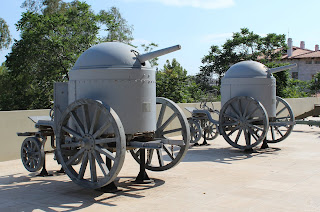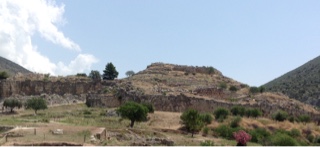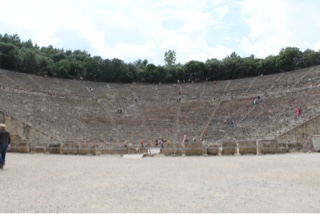The ancient city of Corinth is just few miles south of the modern Corinth Canal and the narrow Isthmus that separates the Peloponnese from the rest of mainland Greece. After landing at Athens this was our first stop on this year's Balkan tour.
The 6th century ancient city was one of the most powerful states in Greece, largely due to its strategic position and trading links. It had two ports on either side of the Isthmus and walls connected the city to these ports. The ruins of the city have been excavated and offer a clear picture of the layout. The columns of the Temple of Apollo, built in the 5th century is the most prominent ruin. There is a medium sized museum on site that tells the history of Corinth and has statues and other items recovered from the excavations.
The city held an astonishingly large population of over 300,000, plus at least as many slaves. They did enjoy themselves, paying homage to the goddess of love, Aphrodite. This meant rollicking with the Temple's prostitutes, male and female. St Paul famously tried to divert them to Christianity - a pretty tough pitch in the circumstances!
You can drive up to the star attraction, which is the citadel Acrocorinth. This is situated 575 metres above the city, with walls over 2,000 metres in length. The view is stunning and possibly one of the strongest fortresses I have visited. The ruins are well preserved and were built on by the Romans, Byzantines, Franks, Venetians and Turks.
There is another fortress on hill south-west of Acrocorinth. I am not sure, but this may be the Frankish castle of Pendeskouphi, built in 1205 by Boniface of Monferrat, or possibly by Geoffrey of Villehardouin. The Greeks renovated the castle in 1825 and there are apparently signs of Venetian and Turkish improvements.




















































